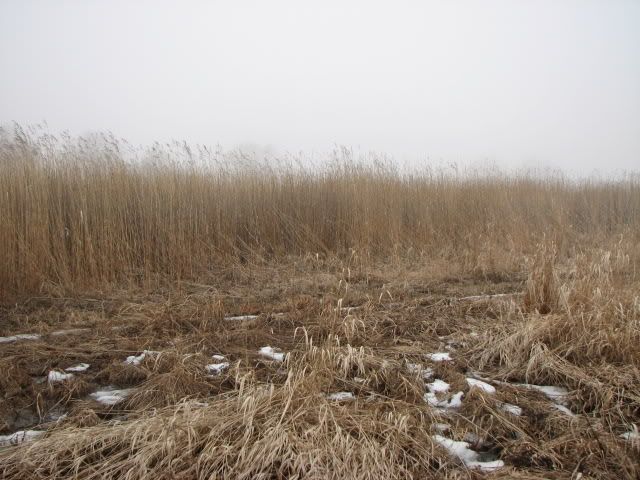Some questions have been brought up that I will post here well aware that some folks do not have farming backgrounds and there are things that are just plain confusing.
Exactly what does "frost" or "dormant" seeding mean and what methods of planting are involved?
Frost or dormant seeding just means seeding during the winter time and allowing Mother Nature to use natural freezing/thawing to both stratify the switchgrass seed and move the seed into the soil surface.
By winter seeding we can both use the natural action of the soil moving via freezing/thawing to incorporate seeds (and that includes all types of native grass and wildflower seeds) into the very top soil surface (thus avoiding the problem of planting native seeds too deep) and the wet chill process of late winter will insure stratification of any hard dormant seeds.
Switchgrass, eastern gamagrass and many widlflowers are notorious for having a high percentage of dormant seeds so winter seeding completely takes this problem out of the equation.
One can either broadcast or run a drill over the frozen soil surface, either way will work just fine because all we want to do is get the seeds on the soil surface and let nature do the rest.
Broadcasting can be done via hand spreaders, ATV mounted spreaders or tractor mounted spreaders all of which will need to be set on the lowest setting for tiny seeds like switchgrass.
Fluffy NWSG seeds like Indiangrass and Big Bluestem are tougher to plant using conventional broadcast seeders but there are Truax fluffy seeders available (check my NWSG threads via the link at the bottom of my posts)
Drills such as Truax or Great Plains usually have fluffy and small seed boxes on them and can be rented through many PF/NRCS/County Conservation Offices for a minimal fee or you can hire someone such as a PF habitat team or private applicator.
Drills just add some accuracy in actual seeding rates per acre and make sowing fluffies eaiser but are by no means necessary and I have seeded by both means for many years successfully.
When using a drill on frozen soils, one only needs to drop the seeds on the soil surface and let nature do the rest.
I am going to plant my switchgrass on a field that had RR beans in it last year....do I still need atrazine?
Planting into a bean stubble field is a perfect scenario because the coll seasons have been killed and the soil surface is bare however...weeds will still rapidly emerge in the spring and quickly overtake the field, smothering the switch seedlings.
It is possible of course to use mowing to control weeds and avoid the further use of herbicides just clip the weeds 8-12" high as needed.
Mowing however will set your switchgrass (or nwsg mix) back a year and that's the reason for residuals like atrazine.
Atrazine applied before weeds emerge will keep the field free of weeds (depending on the rate used) and allow the switchgrass (just like corn) to grow freely and rapidly.
Simazine is an alternative herbicide because it is not restricted in most states but may not provide as complete control as atrazine especially on heavy soils.
Applying a combination of glyphosate and atarzine/simazine in mid April (in most mid west states) before switchgrass emerges will usually assure you of a first year stand of switchgrass.
Is it better to follow corn the beans?
IMO it's better to follow beans just because the soil surface is clear but certainly one can seed into corn stubble. In both cases usually the residual action of any herbicides will be minimal the following year negating it's usefulness as far as controlling weeds in first year switchgrass.
All of this gives landowners several options both to plant and control weeds depending on thier budget and capabilities. Winter seeding has proven to be the least expensive yet most successful method of establishing NWSG and if followied with atrazine on switchgrass or Plateau on a mixed NWSG planting, you'll end up with a greatstand in one season...


















